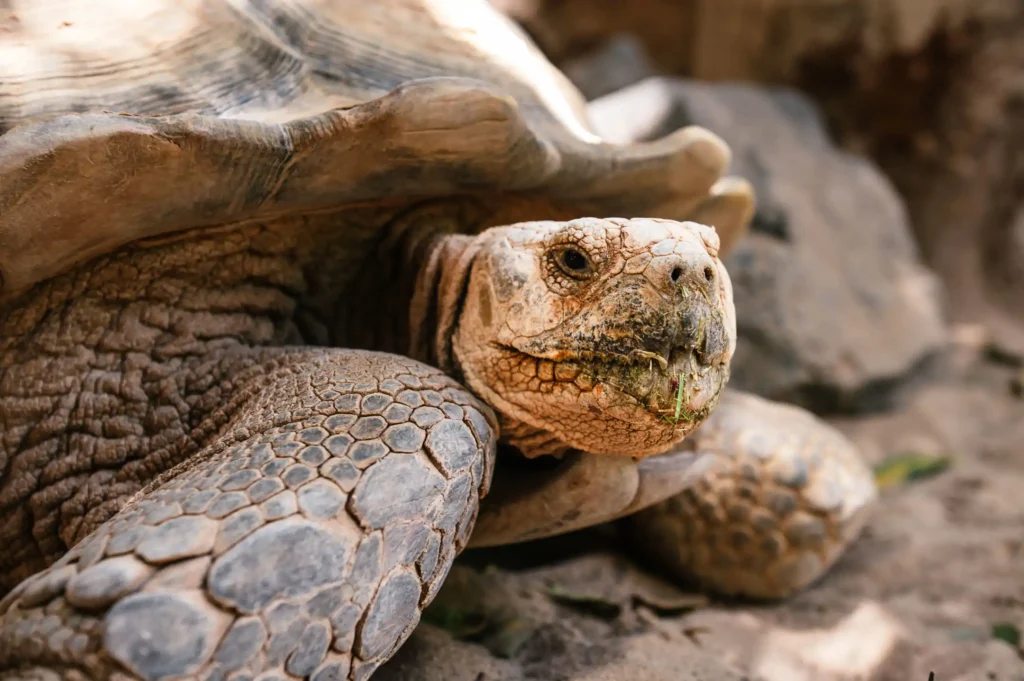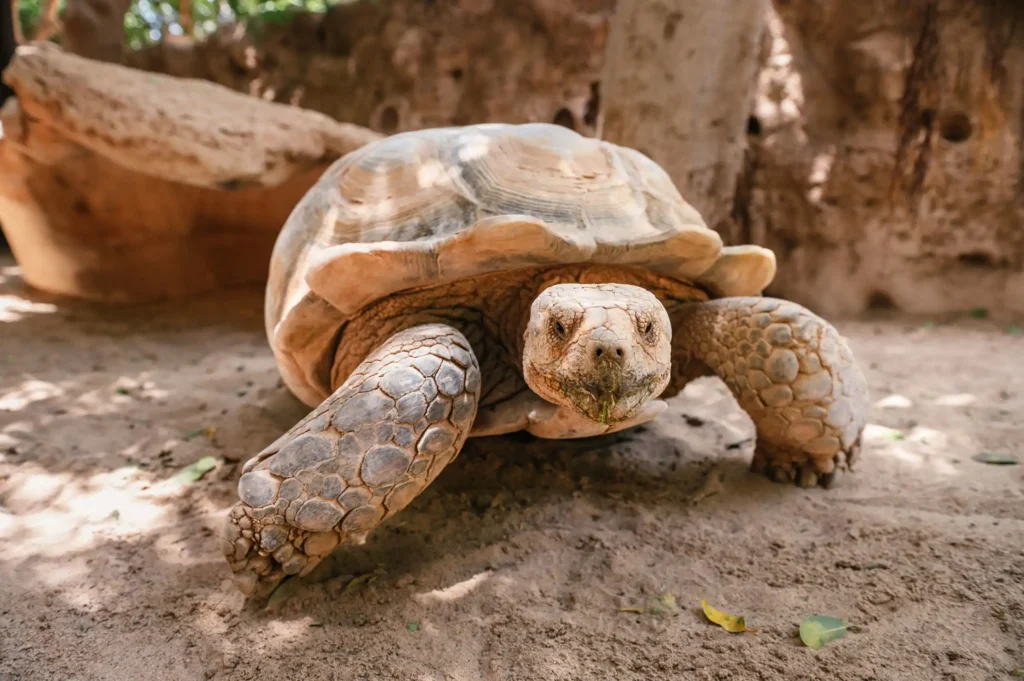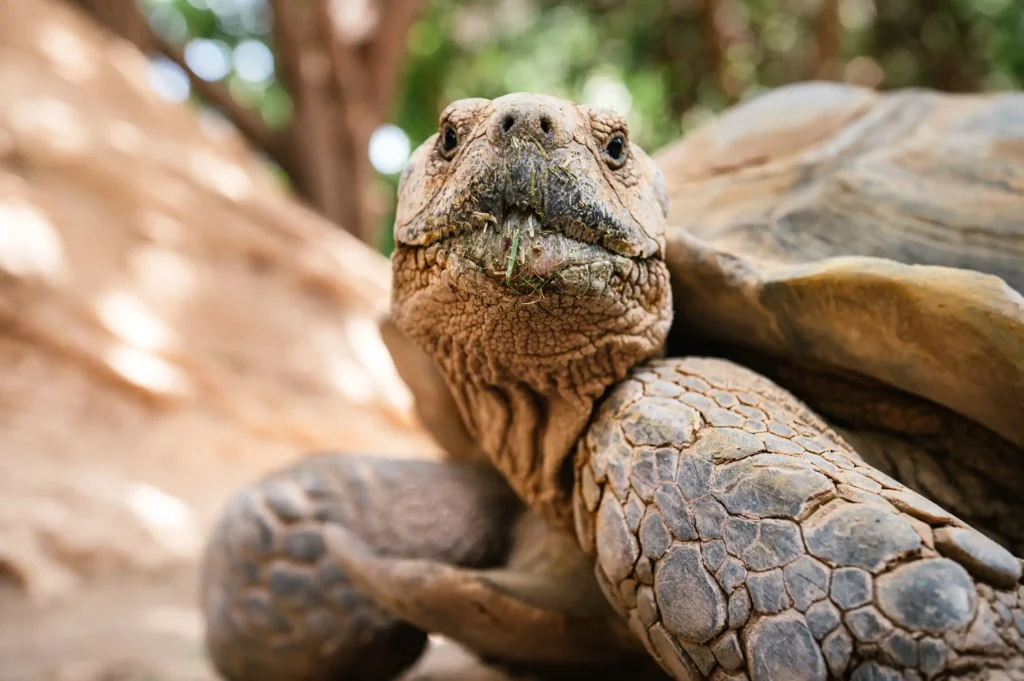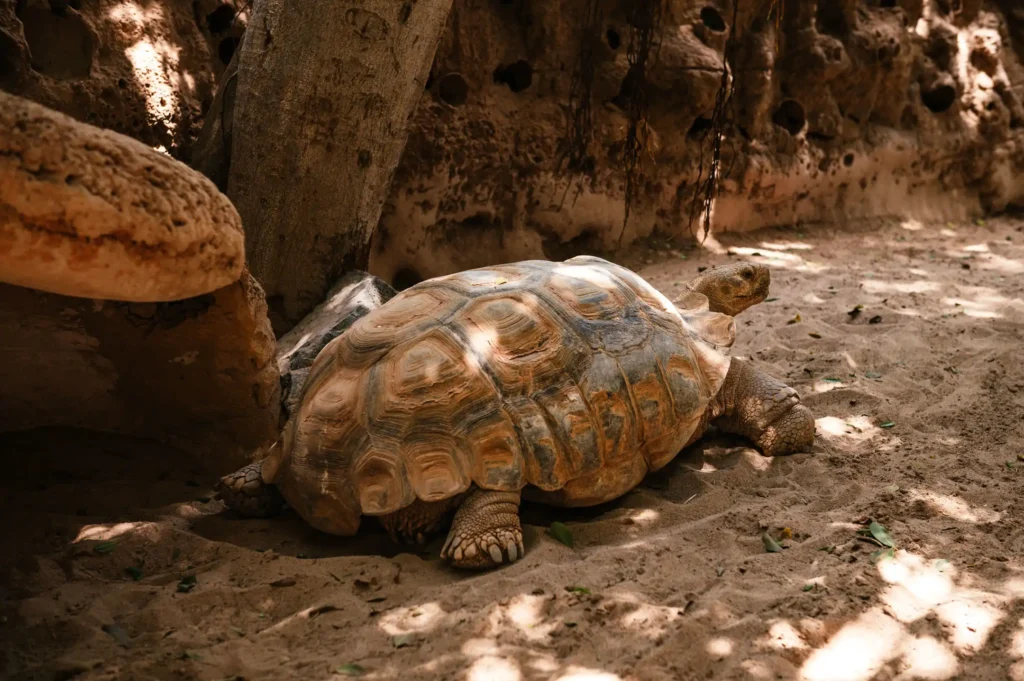The African Spurred Tortoise’s name refers to the furrows on the tortoise’s scales on the front legs. It is the third largest species of tortoise in the world and the largest species of mainland tortoise (the two largest turtle species live on islands). It belongs to the family Testudinidae (mainland tortoises). The range of distribution and behaviour of the African Spurred Tortoise is similar to the Leopard Tortoises’ (Geochelone pardalis). Both species are easy to differentiate, as the latter is smaller and has a stockier body. Furthermore, its carapace is more bulged and the colour pattern different.
Main characteristics
African Spurred Tortoises have a huge carapace, which is not excessively bulged. Their growth rings are clearly visible. The individual scutes are clearly domed, which is due to the quick growth. The colour of the carapace is light-brown, and so is their plastron, head and feet.
The juvenile tortoises’ carapace is lighter, with dark, double lines surrounding the individual plates. Due to its colour pattern, the African Spurred Tortoise is excellently camouflaged in its natural habitat, the African savannah with its arid vegetation and sandy ground.
Males are generally bigger than females. Their anal plates are wider opened than the females’. The males’ average size is 80cm with a body weight of 100Kg.
The African Spurred Tortoise is native to the Sahara Desert and the Sahel, a transitional eco-region of semi-arid grasslands, savannas, and thorn shrublands found in the countries of from Northern Ethiopia to Mauritania. They can also be found in desert and mountainous areas.
African Spurred Tortoise, Centrochelys sulcata
Facts:
How are they?
The African Spurred Tortoise is the largest and heaviest species of mainland tortoise, with an average length of 80cm and 100kg of weight. It has a large carapace, which is not excessively bulged. The carapace, underpart (plastron), head and feet are light brown. The species has large and strong scales on the front legs.
How to differentiate males and females?
Males are generally bigger than females, including a larger tail. The anal plates are wider opened in the males than in the females.
How is the species geographically distributed?
Central Africa, from Northern Ethiopia to Mauritania.
Where do they live?
In savannahs and semi-arid grasslands, but also in desert and mountainous areas. What do they feed on? Plants and vegetables.





